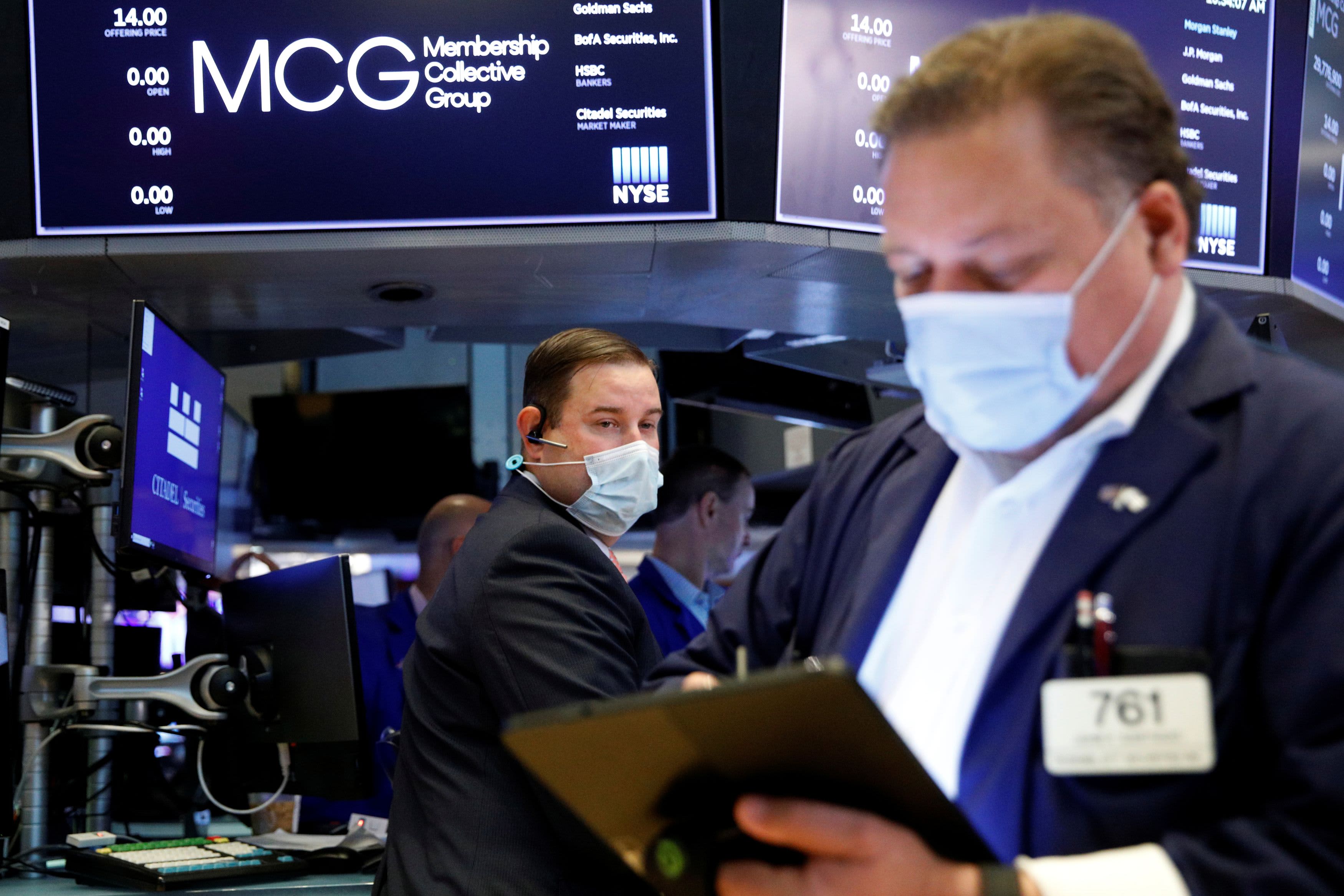Stocks are flat following an unexpected gain in jobless claims, tech shares rise

U.S. stocks were mostly flat as an unexpected jump in jobless claims kept investors on edge about the economy.
The Dow Jones Industrial Average fell 4 points. The S&P 500 was higher by less than 0.01%. The tech-heavy Nasdaq Composite added is leading the markets with a 0.1% gain.
Jobless claims unexpectedly rose to 419,000 last week, higher than the 350,000 economists polled by Dow Jones estimated and more than the upwardly revised 368,000 from the previous period, the Labor Department reported Thursday. The 10-year Treasury yield ticked lower after the report.
“There’s no question that the jump in jobless claims is an unwelcome surprise and a dent to momentum for continued improvement on the jobs front,” Mike Loewengart, managing director of investment strategy at E-Trade, told CNBC. “The disappointing number may cause an initial shock to the system, but many could view this as short-term volatility in the labor market until we see benefits start to expire. For the most part, the market has shaken off Monday’s sell-off in favor of strong earnings, so market watchers could see the forest from the trees in this scenario.”
The Dow is up slightly on the week and sits about 1% from a record high, bouncing back from a 700-point-plus rout on Monday.
Still economic worries are lingering and the the 10-year Treasury yield was slightly lower again on Thursday to 1.247%. The rate dropped to a 5-month low of 1.17% earlier in the week that spooked stocks.
Investors are going back into their favorite tech stocks as worries about the economy resurface and yields fell lower. Apple and Microsoft, which are scheduled to report earnings next week, are trading about 1.5% higher. Amazon is trading almost 1% higher.
Still, a strong second-quarter earnings reporting season continues, with American Airlines posting a profit for the second-quarter, snapping a streak of five straight quarters with losses, thanks to the recovery in travel demand and government aid. The shares, which were up 8% this week, are down slightly on Thursday. Similarly, Southwest Airlines reported a quarterly profit, but the carrier’s stock is 1.7% lower.
Union Pacific, traded up more than 2% after reporting second-quarter net income of $1.8 billion or $2.72 per diluted share. That’s up from $1.1 billion, or $1.67 per diluted share in the year-ago quarter.
AT&T also gained slightly after earnings and revenue topped analyst estimates and CSX jumped over 4% after the railroad’s second-quarter profit more than doubled.
Intel, Twitter, Snap and Capital One will post quarterly updates after the market closes.
Texas Instruments is down roughly 5%, however, after the chipmaker topped expectations for the second quarter, but warned that third quarter results could fall short of analysts’ estimates.
On Wednesday, the Dow gained 286 points, or 0.83%, while the S&P climbed 0.82%. The Nasdaq Composite was the relative outperformer, rising 0.92%. Energy was the top-performing S&P group, advancing 3.5% as oil prices rebounded. Wednesday’s gains built on Tuesday’s strong session, and the major averages erased the losses from Monday’s sell-off. The Dow dropped more than 700 points to start the week as rising Covid cases worldwide hit sentiment.
“The truth is investors have been very spoiled by the recent stock market performance,” noted LPL Financial chief market strategist Ryan Detrick. “Incredibly, we haven’t seen as much as a 5% pullback since October. Although we firmly think this bull market is alive and well, let’s not fool ourselves into thinking trees grow forever. Risk is no doubt increasing as we head into the troublesome August and September months.”
So far 15% of the S&P 500 has reported earnings, with 88% beating earnings estimates, according to Refinitiv. Of the companies that have reported, 84% have topped revenue expectations.
“We expect a continuation of sloppy trading through the seasonally-weak summer months; however, our base case remains that the primary trend over the next 12 months remains higher,” Keith Lerner, chief market strategist at Truist wrote in a note to clients. “The S&P 500, which just made a new record high last week, has gone one of the longest periods of the past decade without so much as a 5% pullback,” he added.
Become a smarter investor with CNBC Pro.
Get stock picks, analyst calls, exclusive interviews and access to CNBC TV.
Sign up to start a free trial today




